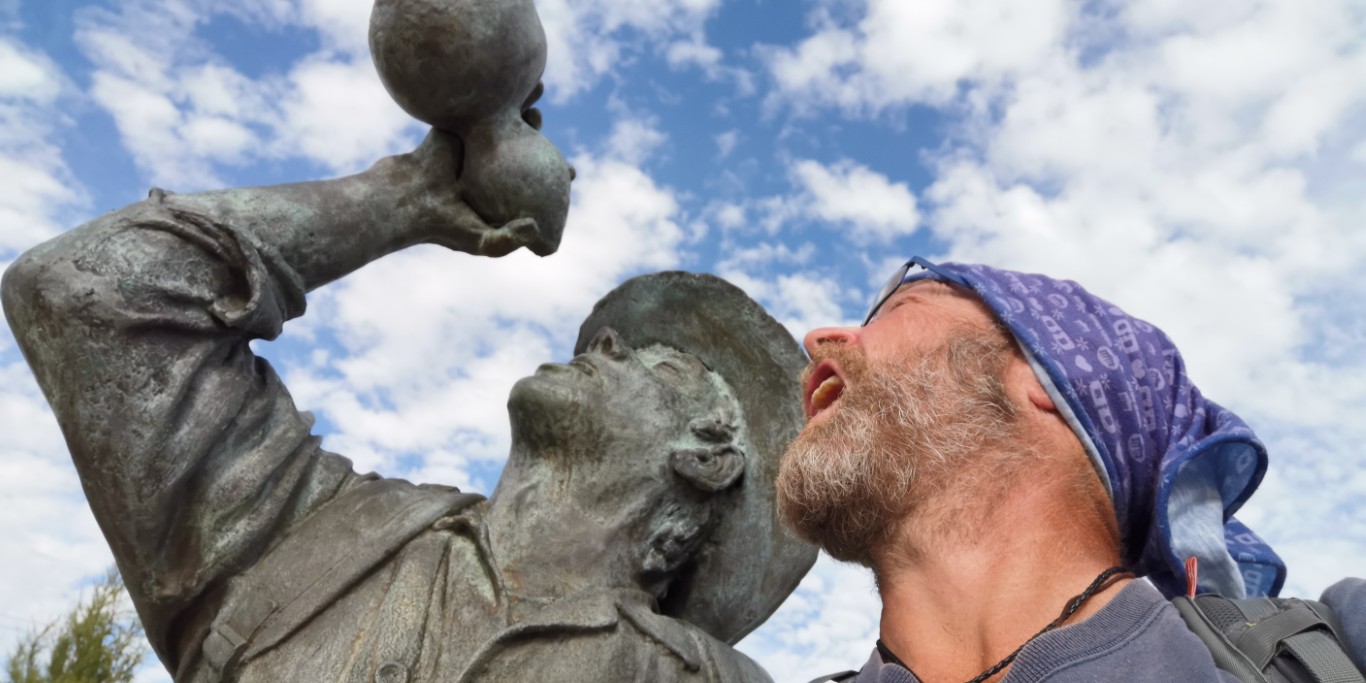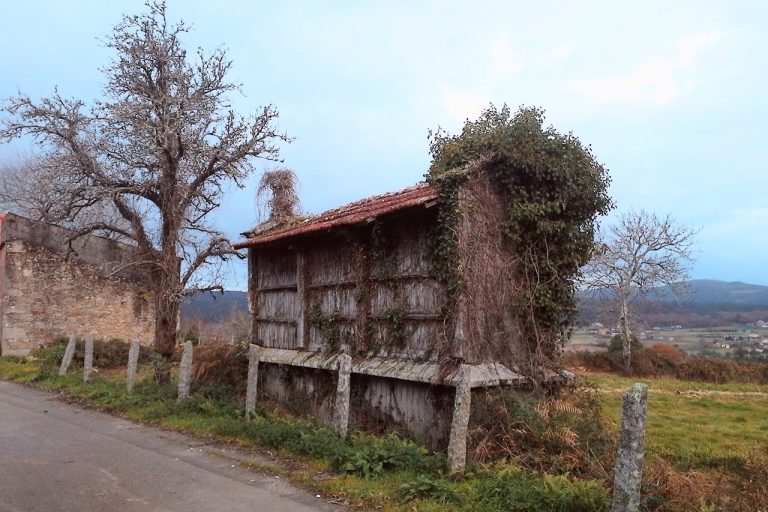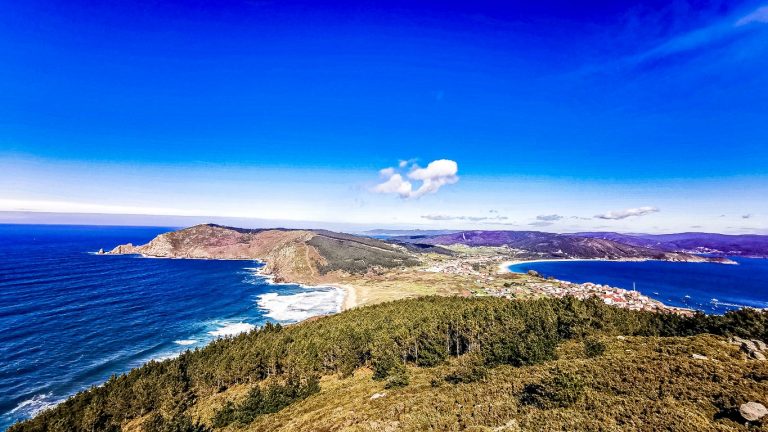
A New Stage Day – Introduction & Atmosphere
With this long, almost 29 km stage, you finally leave behind the open plain of the Leónese Páramo and approach the historic episcopal city of Astorga. It is a route full of contrasts: from the flat land with small villages to historic bridges, legendary knightly tournaments, and finally the first “rompepiernas” hills, already preparing you for the mountain stages to come.
This is a day on which you will feel the history of the Camino several times – in San Martín with its pilgrim hospital, in medieval Hospital de Órbigo with its famous knightly games, and finally in Astorga, where the French Way meets the Vía de la Plata.
Route & Elevation Profile
- Distance: 28.9 km
- Elevation gain/loss: +220 m / –210 m
- Difficulty: medium/easy, but long
- Character: Mostly flat, in the last third undulating ascents (“rompepiernas”).












Description of the Path – With All Senses
From Villadangos you first walk along the canal out into the open land. After 4.5 km you reach San Martín del Camino, a small place already mentioned in the 13th century. Here there was an old hospital, and the church is dedicated to Saint Martin of Tours – patron of pilgrims.
Shortly afterwards the Camino leads you directly to Hospital de Órbigo, which you enter via the impressive medieval bridge, the Puente de Órbigo. Here it is worth pausing: in 1434 the knight Suero de Quiñones held his legendary tournaments and challenged knights from all over Europe – a high point of knighthood in the context of the Way of St. James. The church of San Juan still testifies to the presence of the Knights Hospitaller.
From here there are two routes: the northern one via Villares de Órbigo and Santibáñez de Valdeiglesias, or the direct southern track. The northern way is considered more scenic, as it leads you across fields, small hills, and through light forests. In Santibáñez stands the church of the Trinity. Afterwards follows a sequence of hills and valleys – a foretaste of the Montes de León.
Over the Cruz de Santo Toribio (905 m), named after a bishop of Astorga, the view finally opens onto the city of Astorga and the mountains rising behind it. A few kilometers further you pass through San Justo de la Vega, with its church of Saints Justus and Pastor.
A final ascent, and you reach the historic center of Astorga – a city known since Roman times as “Asturica Augusta” and for centuries a crossroads of pilgrim routes.
Intermediate Places & Special Features
| Place | Distance from Start | Special Feature | Tip |
| San Martín del Camino | 4.5 km | Church of San Martín, old pilgrim hospital | Coffee & shopping opportunity |
| Hospital de Órbigo | 6.6 km | Puente de Órbigo, tournaments of Suero de Quiñones | Ideal for a break & sightseeing |
| Villares de Órbigo | 3.0 km | Church of Santiago Apóstol | |
| Santibáñez de Valdeiglesias | 2.3 km | Church of the Trinity, small albergues | |
| San Justo de la Vega | 8.2 km | Church of Saints Justus & Pastor, view of Astorga | |
| Astorga | 3.6 km | Cathedral, Gaudí’s Episcopal Palace, Roman roots | Stage destination |
Packing & Shopping Tips
- Long stage: pack enough water & snacks, as there are longer stretches without supplies.
- In Hospital de Órbigo, a good opportunity for a break and sightseeing.
- Gentle climbs after Santibáñez: trekking poles helpful.
Food, Accommodation & Services
- San Martín del Camino: Several albergues & bars.
- Hospital de Órbigo: Wide selection of pilgrim hostels, hotels & restaurants.
- Villares & Santibáñez: Small albergues.
- San Justo de la Vega: Hostales for pilgrims.
- Astorga: Great variety – from large albergues to spa hotels.
The Special Aspect Today
The Puente de Órbigo is one of the most iconic structures of the Camino. Over this medieval bridge, part of the Roman Vía de la Plata, knights rode in 1434 under Suero de Quiñones, who swore to wear an iron collar on Thursdays for a whole year until he could regain his honor in a tournament. In the “Justas del Paso Honroso,” he fought against 300 knights from all over Europe. This event is deeply anchored in the collective memory of the Camino.
The Knights Hospitaller shaped Hospital de Órbigo with their hospital and the church of San Juan. They cared for pilgrims, protected the bridge, and combined knightly ideals with charity – two forces that accompanied the Camino for centuries.
At the Cruz de Santo Toribio begins the view of Astorga. Saint Toribio, bishop of the city in the 5th century, fought against Priscillianism and was later venerated as a saint. The site of the cross has become a small pilgrim monument, symbolically marking the transition from the flat land into the mountains.
Astorga is finally a treasure chest of the Way of St. James: here Roman past, medieval pilgrim history, and modern spirituality merge. The cathedral, with Gothic core, Baroque façade, and Renaissance elements, tells of centuries. Right next to it rises the Episcopal Palace designed by Antoni Gaudí, today the Museo de los Caminos – a unique place that preserves the soul of the Way of St. James.
Special Circumstances: The Maragato Villages
With these stages the pilgrim enters the tradition-rich region of La Maragatería, which begins west of Astorga and extends into the Montes de León. For centuries the Maragatos shaped the life of this area. They were famous as muleteers and traders, who transported goods with their wagons from the Atlantic ports of Galicia to the Castilian plateau. Their origins are still unclear, but they were considered independent, reserved, and at the same time reliable, firmly rooted in their community.
Particularly impressive are the typical villages of La Maragatería, which have preserved their original character to this day. Mighty stone houses with wide portals – the portones maragatos – and large courtyards bear witness to a time when family, animals, and trade were united under one roof. The cobbled streets, low rows of houses, and clear village structures convey the image of a closed yet strong culture. Villages such as Castrillo de los Polvazares, Santa Colomba de Somoza, or Murias de Rechivaldo are vivid examples of this architecture and still captivate pilgrims and visitors today.
Also in cuisine and traditions the Maragato culture lives on. The famous Cocido Maragato is a rich stew served in reverse order: first the meat, then chickpeas and vegetables, and only at the end the soup. This way of eating reflects the lifestyle of the muleteers, who spent much time on the road and had to strengthen themselves as much as possible. Festivals, costumes, and centuries-old customs show that La Maragatería is more than just a landscape – it is a cultural island in the heart of the Camino.
Reflection at the End of the Stage
This stage shows the full range of the Camino: knightly honor, monastic charity, rural silence, and a historic city full of monuments. After almost 30 kilometers you are tired – but the view of Astorga and the thought of the Montes de León fill you with anticipation.
📊 Tabular Overview
| Stage | Start | Goal | Distance | Elevation Gain/Loss | Difficulty | Intermediate Places |
| 23 | Villadangos del Páramo | Astorga | 28.9 km | +220 / –210 | medium/easy, but long | San Martín, Hospital de Órbigo, Villares, Santibáñez, San Justo |
🌌 Camino of the Stars – Stage 23:
Villadangos → San Martín del Camino → Hospital de Órbigo → Villares → Santibáñez → San Justo de la Vega → Astorga
Have you ever heard the tournament legend of Suero de Quiñones at the Puente de Órbigo, or perhaps even experienced the festival there? Share your experience with other pilgrims!


